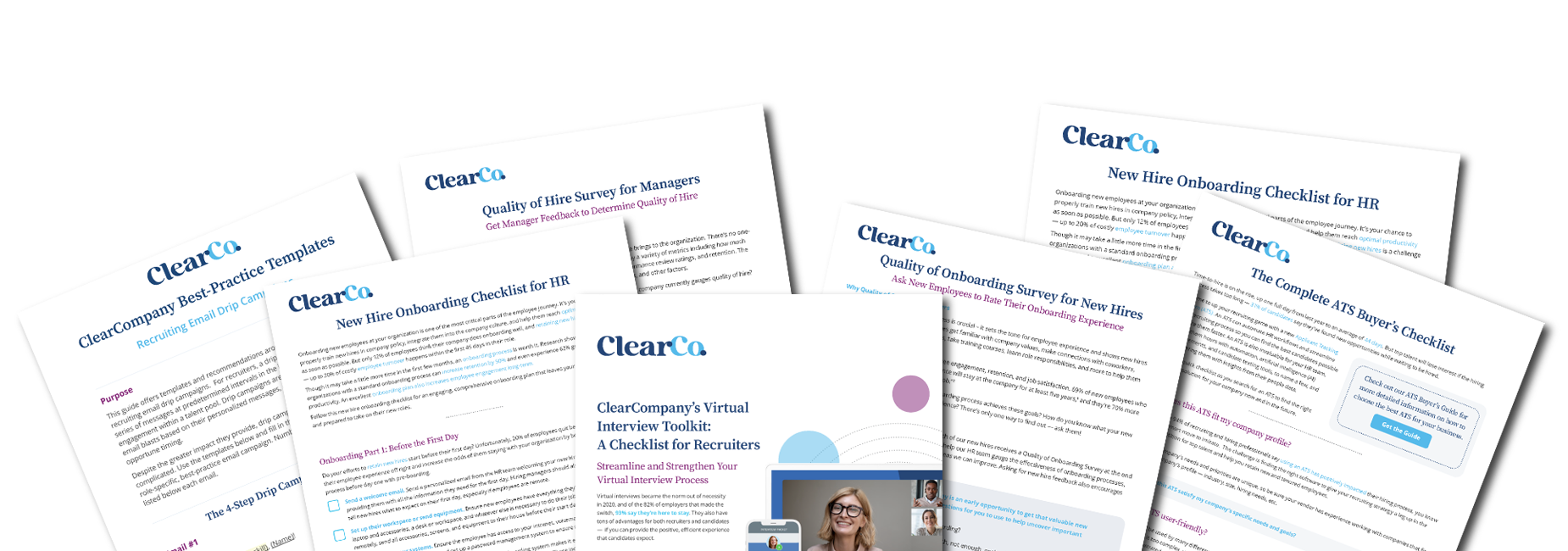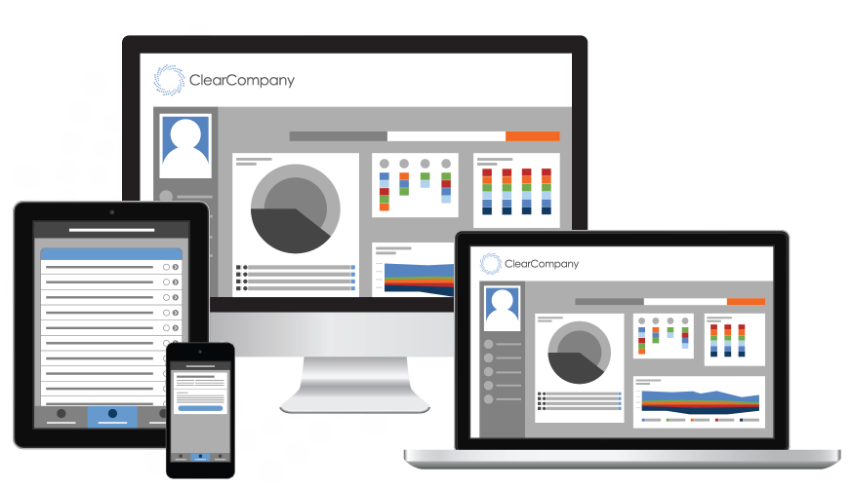Human resources departments handle it all when it comes to managing a company’s workforce. They find, interview, and hire candidates, facilitate onboarding and performance management, and develop employee engagement strategies. HR arranges employee training sessions and professional development opportunities and conducts headcount forecasting and succession planning. All of these duties play an integral part in business strategy as a whole.
Without HR, there are no employees, let alone qualified, engaged, long-term employees. That’s why in today’s post, we’ll take a closer look at two parts of HR strategy that are sometimes conflated or confused, talent acquisition and talent management. These two functions of HR departments work together to attract and retain skilled employees, but each has a distinct role in the talent lifecycle.
Do you know the difference between #TalentManagement and #TalentAcquisition? Find out in the latest post from @ClearCompany:What Is Talent Acquisition?
Talent acquisition is the process of recruiting, interviewing, hiring, and onboarding qualified candidates at an organization. Talent acquisition is typically a function of HR but could be its own team or department at larger organizations. Daily talent acquisition tasks include:
- Writing job descriptions and posting open positions
- Sourcing and reaching out to candidates
- Reviewing applications and resumes and vetting applicants
- Screening and interviewing candidates
- Hiring and onboarding new employees
In addition to their immediate goal of filling open positions, talent acquisition teams also have strategic goals. Their strategic objectives focus on strengthening the complete talent acquisition process so that businesses can quickly find and hire best-fit candidates. Goals for talent acquisition teams include:
- Creating and refining recruitment, hiring, and onboarding processes
- Representing the employer’s brand to candidates and creating a positive brand image
- Discovering new candidate sources and fostering reliable talent pipelines
- Building relationships with past applicants and qualified candidates who were not hired
- Aligning talent acquisition goals to business objectives
Each of the responsibilities on the lists above has its own lists of tasks buried within. That can be overwhelming for HR teams whose focus is constantly being pulled in several directions. Maybe that’s why 58% of businesses use talent acquisition software. Software like ClearCompany offers tons of tools to create an excellent candidate experience and simplify the hiring process:
- Quickly post open jobs to multiple job boards
- Create multilingual applications, expanding talent pools
- Mobile applications and text messaging tools like Text-to-Apply
- Integrates with LinkedIn Recruiter System Connect and LinkedIn Apply Connect
- Automated interview scheduling
- Paperless onboarding for new hires
What Is Talent Management?
Talent acquisition and management go hand-in-hand. After acquiring top talent, your organization needs a talent management strategy that engages, develops, and retains those A-players. Talent management refers to the methods and processes companies use to support learning and development, onboarding, performance management, recognition, and employee engagement.
Your talent management strategy plays a critical role in employee retention:
- Highly engaged employees are five times less likely to quit.
- Retention rates are up to 34% higher when employees can access professional development opportunities.
- 37% of employees said recognition for their work is the best thing their employer could do for their success.
Talent management includes any initiatives related to employee development, performance, or engagement, plus, HR’s predictions for future workforce needs:
- Leadership coaching and mentoring
- Employee development programs
- Professional development program opportunities, including classes and certifications
- Performance review cycles with a variety of review types, including 360-degree feedback
- Employee surveys measuring onboarding efficacy, engagement, job satisfaction, emotional well-being, and more
- Headcount forecasting and workforce planning
Talent management strategies may be executed by a variety of people depending on your company’s size. Mid-size and small businesses may have talent management specialists on the HR team, while larger organizations may have a dedicated talent management team or department.
Employees’ talent management needs also vary depending on the industry and role. A large hospital and a small insurance agency will employ different methods to evaluate, train, and engage their workers. At most businesses, leadership participates in talent management strategy in some capacity, like serving as a mentor or conducting employee reviews.
A talent management solution like ClearCompany equips HR teams with tools to help improve talent management methods and execute their strategies successfully.
- Employee engagement survey tools allow HR to quickly create surveys from a variety of templates, send them to employees, and collect and analyze the results.
- Recognition and celebration tools help the company acknowledge and celebrate every employee’s big wins and milestones.
- Goal planning tools help employees set SMART goals and allow managers to leave instant feedback, as well as promote transparency and accountability company-wide.
Why You Need Strategies For Both
It’s long been said that a business’s best asset is its people, which has become even more apparent in recent years. Your employees are what makes your organization what it is. Whether you’re known for a culture where innovation thrives, outstanding customer service, or an award-winning product (or all three, like ClearCompany!), your people determine your business’s strengths and successes. That’s why it’s important to support your people with both talent acquisition and talent management strategies.
"Employees are a company’s greatest asset – they’re your competitive advantage. You want to attract and retain the best; provide them with encouragement, stimulus and make them feel that they are an integral part of the company’s mission."
- Anne M. Mulcahy, former CEO and chairwoman of Xerox Corporation
When employees have a positive talent acquisition experience, they tend to stay with your company longer. Even if they aren’t hired, they have a more favorable impression of your company and may be interested in applying in the future. A strong talent management strategy encourages high retention and motivation and creates a continuously improving workforce. Both strategies are vital if your goal is engaged, motivated, loyal employees.
Enable your HR department to build the talent acquisition and management strategies possible with the help of ClearCompany’s Talent Management Platform. Our tools give your HR team what they need to acquire great employees and effectively manage their talent lifecycle.
See ClearCompany’s complete Talent Management Suite in action with a free, comprehensive demo. Sign up today.



